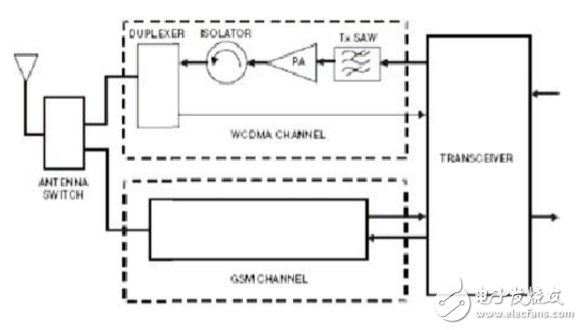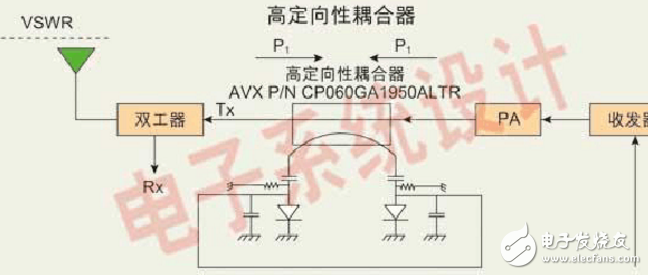RF directional coupler application
Directional couplers are essential components in RF systems, designed to separate and monitor signals as they propagate along a transmission line. When an electric wave travels through the main line, a portion of its energy is induced on the auxiliary arm (also known as the coupling line). This induced signal is directly proportional to the forward wave traveling in the main line. The ratio of the coupled power to the input power is referred to as the coupling factor.
Directivity measures the ability of a directional coupler to distinguish between signals traveling in the forward and reverse directions. It is defined as the difference in decibels (dB) between the output at the coupled port when the signal is transmitted in the desired direction and when it is transmitted in the opposite direction.
The coupling factor is calculated using the formula: Coupling Factor = 10log(P2/P1), where P1 represents the input power and P2 is the power coupled to the auxiliary line.
Directivity is given by the equation: Directivity = 10log(P2/P2R), where P2 corresponds to the power coupled for the forward signal, and P2R is the power coupled for the reverse signal (see Figure 1).

Figure 1: (a) Forward, (b) Reverse directional coupler schematic.
Directionality (dB) = Isolation (dB) - Coupling (dB)
Limited isolation between ports leads to reduced directionality. A directional coupler allows energy meters to measure the power in a transmission line by sampling the signal at the coupling port. However, this measurement can be affected by the coupling factor and reflected signals, which may cause errors. To improve accuracy, either the reflected signal must be eliminated or a highly directional coupler should be used.
Energy Control in Mobile Phones
Mobile phones use antennas connected to RF circuits to both receive and transmit signals. In the 3G WCDMA band, variable signal amplification is used to increase the average output power to a peak level, allowing coverage over a wide bandwidth shared among many users. The base station adjusts the phone’s output power to ensure that all uplink signals from mobile devices within the same channel are received with less than 1 dB variation. If this precision isn't met, call quality may suffer, leading to dropped calls and poor user experience.

Figure 2: Basic GSM+3G radio functional block diagram.
In contrast, GSM uses TDMA and GMSK modulation, where each user has exclusive access to a specific time slot and channel. As a result, issues with energy control have minimal impact on other users, making them less critical for network performance.
High Performance Directional Couplers
In dense antenna environments, changes in the system can lead to impedance mismatches and increased reflected energy. The worst-case VSWR we consider is 6:1, such as when an antenna fails to operate properly.
To prevent reverse signals from affecting the transmitted signal and to filter out mismatched reflections from the antenna, an isolator must be placed between the power amplifier (PA) output and the antenna. The impedance between the input and output is typically 50Ω. However, in most cases, isolators are avoided due to their size, cost, and insertion loss (often exceeding 0.7 dB), as well as their sensitivity to temperature and aging.
Coupler solutions have been developed to monitor PA output signals in energy control applications. These couplers can also detect transmission and emission energy caused by antenna mismatches (see Figure 3).

ZHOUSHAN JIAERLING METER CO.,LTD , https://www.zsjrlmeter.com